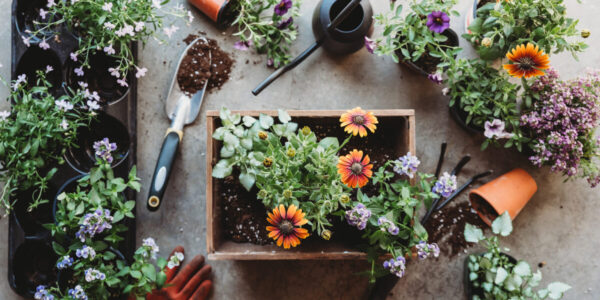
Wine shopping secrets
Great wine inventories are amassing at grocery stores these days, and the prices look good. But when you’re standing in front of the shelves – expensive price tags on top, magnums on the bottom, and no help in sight – how do you choose a good bottle?
My friend Lisa has known lots of wines (I’ve met many with her), but claims not to know much about wine. So she was perfect for the assignment: Hit a supermarket and buy three bottles – one for a weeknight, one for a special dinner, and one to bring to a party.
For her weeknight bottle, Lisa settled on a Wolf Blass Yellow Label Shiraz (on sale for $9.88) from South Australia. “I saw an article somewhere about it flying off the shelves, and I love Shiraz.”
A Spanish sparkler, Cristalino Cava Brut ($7.84), suggested possibilities for company. “I remember buying an Italian prosecco a few years back-one of my rare triumphs. So I think, ‘Italy, Spain … not so far apart … ‘ Her party-gift bottle: an Alexander Valley Vineyards Cabernet Sauvignon. “Alexander Valley is familiar, impressive; everyone who drinks wine likes Cab; plus this one is on sale, from $18.99 to $15.99.”
To see if Lisa’s logic had merit, I tapped two pros ― Russ Parsons, food and wine columnist for the Los Angeles Times, and Leslie Sbrocco, author of Wine for Women. Both had promising words about supermarket wines in general.
According to Russ, “There’s no better time to be a wine drinker than right now. The number of wines that could be considered faulty is very small.” But, he mourns, “most are of a type, similar. We’ve taken out the faults, but also the personality.”
Here are their shopping pointers.
• Follow the producer. If you’ve liked someone’s wines before, you’ll probably like them again. Don’t get hung up on vintages. (Russ’s advice.) Look for producers who’ve found a way to make large lots of interesting wines. Bonny Doon’s Big House Red is his weeknight choice – “a $9 wine that drinks like it cost $18.” Leslie likes Dry Creek Vineyard’s Fumé Blanc – “a good gift and versatile food wine.” Don’t avoid large producers. You’ll get an aggressively priced bottle. Leslie cites Clay Station Shiraz ($8) – “always a good wine.”
• Stay domestic. According to Leslie, high-end European wines aren’t most supermarkets’ strong suit (although Lisa was onto something with the Australian Shiraz).
• Consider a sparkler for any occasion. “Sparkling wine goes with everything, and turns any event into a celebration,” Russ says. His gift pick is a Roederer Estate bubbly ($18). “If this were French, it would easily cost three times as much.”
• Look for magnums. Go for the 1.5-liter versions you’ve liked in standard-size bottles, like Trinity Oaks Cab ($12) – a great party wine, according to Leslie.
• Drink what you know. In the grocery store, my “cellar rats” fell back on what they knew. And lesser knowledge than theirs can still serve you well.
Our picks
Here are six supermarket finds, listed at the price paid. You might find them for a little more or less.
Bonny Doon Vineyard Ca’ del Solo Big House Red 2003 (California; $8.87). This meaty mix of six grapes, from Syrah to Malbec, has Iively berry flavors, with darker plum, herbs, cedar, and a little cocoa.
Chalone Vineyard Pinot Noir 2004 (Chalone; $28). Plummy, smoky aromas, with cloves and faint rose petals, give way to berries, orange peel, and herbs.
Cristalino Cava Brut (Penedès, Spain; $7.84). Crisp green apples, nice minerals, and fine bubbles.
Dry Creek Vineyard Fumé Blanc 2003 (Sonoma County; $10). Citrus with soft minerals. Perfect everyday Sauvignon Blanc.
Ferrari-Carano “Sienna” 2001 (Sonoma County; $21). A lively blend of Sangiovese, Cab, and Merlot, with spicy cherries and espresso, a hint of licorice, then plums, berries, and chocolate.
Wolf Blass Yellow Label Shiraz 2002 (South Australia; $9.88). Meat and blueberries on the nose, with herbs, chocolate, vanilla, and lively, food-friendly acid.
